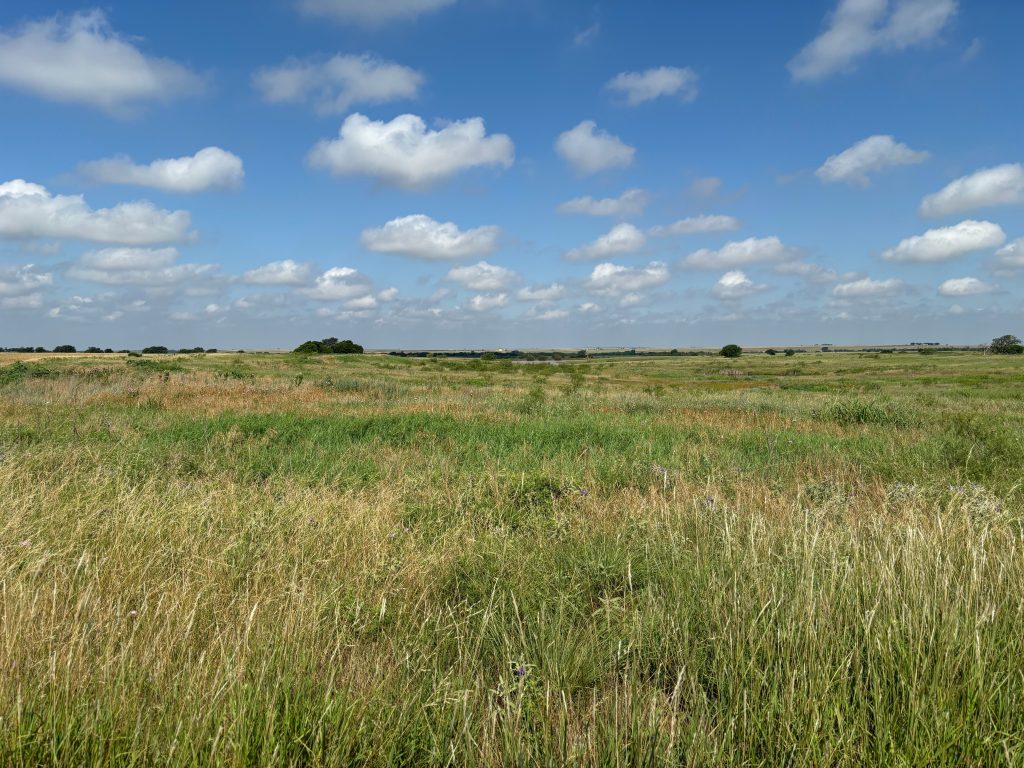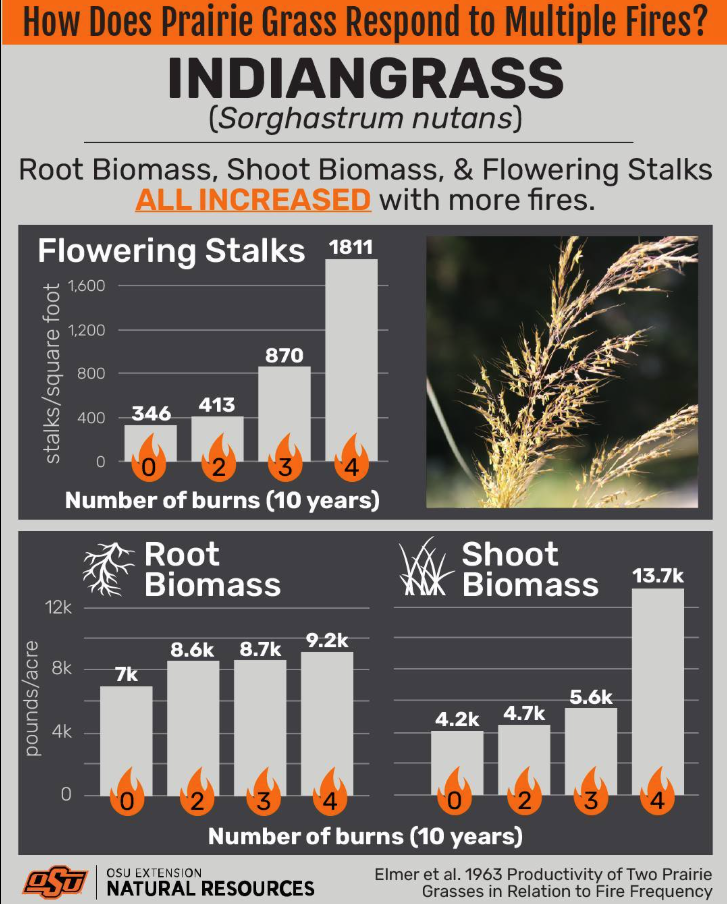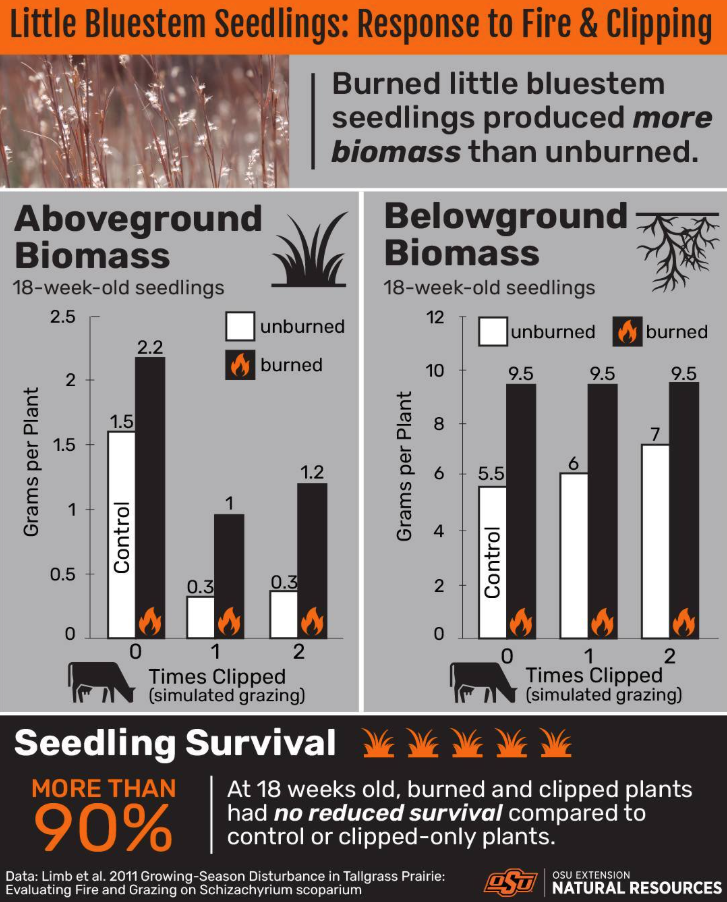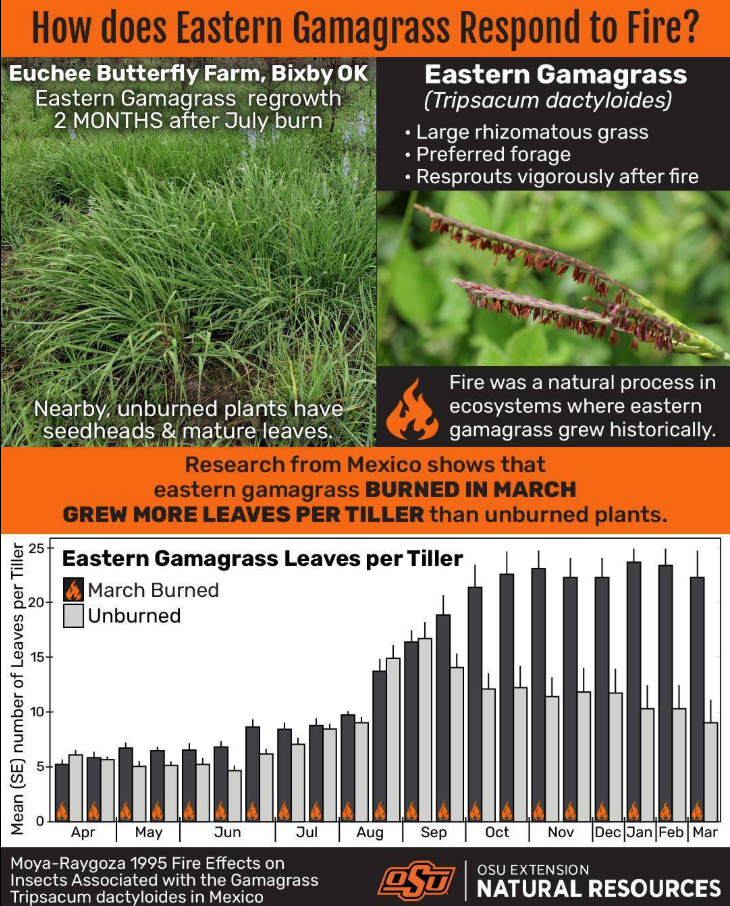
How does prairie grass respond to fire?
1) Indiangrass (Sorghastrum nutans)
Root biomass, shoot biomass and flowering stalks ALL INCREASED with more fires.
Indiangrass Flowering Stalks (after 10 years)
0 burns = 346 stalks/sq ft
2 burns = 413 stalks/sq ft
3 burns = 870 stalks/sq ft
4 burns = 1,811 stalks/sq ft
Indiangrass Root Biomass (after 10 years)
0 burns = 7,000 lbs/ac
2 burns = 8,600 lbs/ac
3 burns = 8,700 lbs/ac
4 burns = 9,200 lbs/ac
Indiangrass Shoot Biomass (after 10 years)
0 burns = 4,200 lbs/ac
2 burns = 4,700 lbs/ac
3 burns = 5,600 lbs/ac
4 burns = 13,700 lbs/ac

Key Findings on Indiangrass Response to Fire
The research found that as the number of controlled burns over a 10-year period increased, so did key indicators of the grass’s health and vitality.
- Flowering Stalks: The number of flowering stalks increased significantly with more burns. The study showed a major jump from 413 stalks per square foot with two burns to 1,811 stalks with four burns.
- Root Biomass: The root biomass, measured in pounds per acre, also saw a consistent increase. It grew from 7,000 pounds per acre with zero burns to 9,200 pounds per acre after four burns.
- Shoot Biomass: Similarly, the shoot biomass, which is the above-ground portion of the plant, increased from 4,200 pounds per acre with zero burns to 13,700 pounds per acre after four burns.
The data presented is from a study by Elmer et al. from 1963, which examined the productivity of prairie grasses in relation to fire frequency. The conclusion of the study is that the root biomass, shoot biomass, and flowering stalks of Indiangrass all “increased with more fires.”
Data from Elmer et al. 1963 Productivity of Two Prairie Grasses in Relation to Fire Frequency
2) Little Bluestem (Schizachyrium scoparium)
Burned little bluestem seedlings produced more biomass than unburned.
Aboveground Biomass (18-week-old seedlings)
Clipped 0 times
– unburned (control): 1.5 grams per plant
– burned: 2.2 g/plant
Clipped 1 time
– unburned: 0.3 g/plant
– burned: 1 g/plant
Clipped 2 times
– unburned: 0.3 g/plant
– burned: 1.2 g/plant
Belowground Biomass (18-week-old seedlings)
Clipped 0 times
– unburned (control): 5.5 grams per plant
– burned: 9.5 g/plant
Clipped 1 time
– unburned: 6 g/plant
– burned: 9.5 g/plant
Clipped 2 times
– unburned: 7 g/plant
– burned: 9.5 g/plant
Seedling Survival: More than 90%
At 18 weeks old, burned and clipped plants had no reduced survival compared to control or clipped-only plants.
Limb et al. 2011 https://doi.org/10.2111/REM-D-10-00022.1
3) Eastern Gamagrass (Tripsacum dactyloides)
– Large, rhizomatous grass
– Preferred forage
– Resprouts vigorously after fire

– Research from Mexico shows that eastern gamagrass burned in March grew more leaves per tiller than unburned plants.
Data: Moya-Raygoza 1995 Fire Effects on Insects Associated with the gamagrass Tripsacum dactyloides in Mexico https://doi.org/10.1093/aesa/88.4.434


















